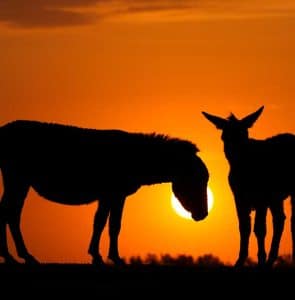Namibia Safari Hunting
Africa is a large and varied continent. The hunting possibilities range from region to region and are just as unique as the continent. As a result, finding “one-size-fits-all” solutions to hunting in Africa is challenging. I’ll discuss the African nation where I’ve hunted in future installments, starting with Namibia. The aforementioned articles (on Botswana, Mozambique, South Africa, Tanzania, and Zimbabwe) are not intended to review the outfitters comprehensively. Instead, I’ll go through hunting conditions, seasons, species available, weather conditions, as well as how to get there and throughout these countries. Contact us to learn more about hunting safaris in namibia

Namibia is a country in southwestern Africa that is slightly bigger than Texas. Namibia’s borders include South Africa to the south, Botswana and Zambia to the east, and Angola to the north. Namibian English is the official language.
Namibia’s hunting season extends from February through November, with the peak of the hunting season occurring during the winter months of May through August. Fortunately, Namibia enjoys mostly pleasant winters; in July, the weather is ideal for hunting: usually 45-75°F and bright. On the other hand, Summers in Namibia are generally hot and rainy. To be sure, Northern Namibia is a malarial zone, especially during the summer, and travelers should take anti-malarial medication when visiting.
The terrain one will encounter while hunting differs from area to area. The southern and eastern parts of the country are extremely arid, with just isolated pockets of vegetation. The vegetation is primarily made up of patches of low brush with few trees. Because long-distance species identification is typically the rule in these regions, hunters must be prepared to take long-range flat-shooting cartridges like the .270 Winchester, 7mm Rem Mag, .308 Winchester, .30-06 Springfield, .300 Win Mag.300 PRC, or .300 Ultra Mag are ideal.
In northern Namibia, where I hunted, the vegetation was considerably thicker, and there were many more trees with occasional gaps where I could see for several hundred yards. You may come much closer to the game in these regions, allowing for shots ranging from 10 to 350 yards. The Acacia tree, found in nearly every corner of Namibia, is extremely thorny. Consider this when designing your wardrobe and choosing clothing that can take a beating; these plants have shredded many hunters’ clothing.
Namibia has many plains games, including steenbok, warthog, springbok, red hartebeest, gemsbok (Oryx), blue wildebeest, greater kudu, both prairie and mountain zebra, and common eland. Namibia is renowned for producing high-quality steenbok, red hartebeest, kudu, gemsbok, and eland. Furthermore, Namibia is the only country where Hartmann’s Mountain Zebra may be hunted.
Namibia is also one of the few places where you can bag all five Big 5 animals. Cape buffalo, leopard, lion, elephant, and black rhinoceros are all hunted. Most of the remaining dangerous game hunting is done in the Caprivi Strip, a thin finger of land extending east from the Okavango Region of Namibia. However, it is not the greatest country for elephant or cape buffalo hunting due to the restricted number of tags available each year.
